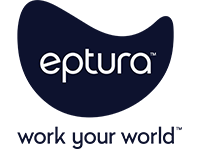Kylash Ramesh is an Integrated Workplace and Facility Asset Program Manager at The National Institutes of Health (NIH) Office of Research Facilities. He’s passionate about Asset Management strategies that integrate both data and human experiences while managing the inventory of all NIH facility assets. Asset Champion host Mike Petrusky asks Kylash about how anecdotal experiences should be integrated with data analysis for more accurate decision-making in facility management and operations. They explore the new priority of understanding space utilization and how organizations can leverage data and worktech tools to manage their physical footprint effectively.
Agenda
- The importance of balancing data with anecdotal or human experiences in decision making
- The role of space and asset data in facilities and asset management
- The impact of technology on asset management
- The significance of user-friendly technology for end-users
- The value of human input in decision-making processes
What you need to know: Facility and maintenance takeaways
Takeaway 1: Space and asset data are crucial for efficient facility management
This episode highlighted the increasing importance of space and asset data for facility management. These are the two primary data sets that owners must commit to maintaining for efficient facility management. Ramesh stressed that understanding the type of space an organization is responsible for is the first step towards developing an effective facility management plan.
“So, if I was starting with a blank slate, the first one I would start with is developing that space inventory,” said Ramesh. He explained the concept of a hierarchical structure of data, which includes regions, campuses, buildings, floors, and rooms within an organization’s physical space. He also emphasized the need for a clear understanding of asset data, dividing the world of products into assets and parts or consumables.
“Your asset inventory will never have a column that says quantity. The reason for that is because every row in your asset inventory represents one. So, you’ll never see the column quantity in your asset inventory,” he noted. He further explained that the quantity column is crucial in the parts and consumables inventory, and harmonizing the parts strategy and asset strategy can lead to better forecasting of parts needed and reduced downtime.
Takeaway 2: The role of technology in facility management
The discussion underscored the exciting potential of technology in enhancing the efficiency of facility management. Ramesh emphasized the value of integrated workplace management systems (IWMS), Building Information Modeling (BIM) platforms, and Building Automation Systems (BAS), which when integrated and are free from data disagreements, can deliver impressive results.
“As I mentioned last time we spoke, Mike, for really large owners, ideally, you have an integrated workplace management system, a BAS, and a BIM platform,” Ramesh stated. He added that low code and no code technology solutions can be advantageous for unique use cases that OEM software companies are unlikely to provide.
“I’ve learned that it’s actually okay for some of these functions to live outside of those three platforms [IWMS, BAS, and BIM], especially any type of use case that’s very unique to your organization but is not necessarily used across every organization in the industry,” Speaker Ramesh explained.
Takeaway 3: The human element in making decisions
The episode stressed the importance of the human element in making decisions, even in the face of advancing technology. Ramesh advised that while data is crucial, it should always be supplemented with anecdotal or human experience, which can often provide insights that data alone cannot.
“If the anecdote and the data don’t agree, the anecdote is probably correct,” says Ramesh, quoting influential business leader Jeff Bezos. He added, “if the anecdote and the data do agree, you know you’re cooking with fire, and you can probably make a sound decision with high confidence.”
He cautioned against overestimating the quality and accuracy of data, which could lead to wrong decisions, emphasizing that human input should always supplement data-driven decisions. “No matter how mature you are as an organization with those aspects, I think you always need to remember that human side and supplement many of the decisions with the human input,” he said.
Asset management insights
- Data alone should not be the only basis for decision-making. It should be supplemented with anecdotal or human experiences.
- Space and asset data are crucial inventories that organizations must maintain for efficient facilities and asset management.
- Technology plays a significant role in asset management, but its implementation can be challenging due to the human variable.
- User-friendly technology is essential as humans are the end-users of these digital tools.
- Despite the advancements in data gathering and technology, the human side should always be considered in decision-making processes.
Do a deep dive into more asset management insights by exploring all Asset Champion Podcast episodes.









